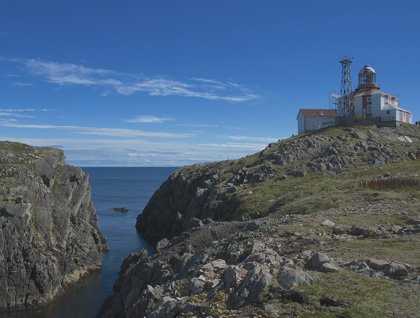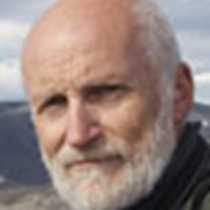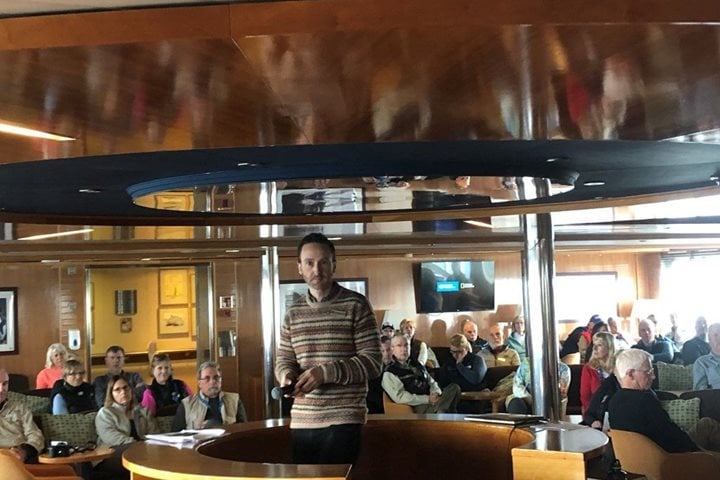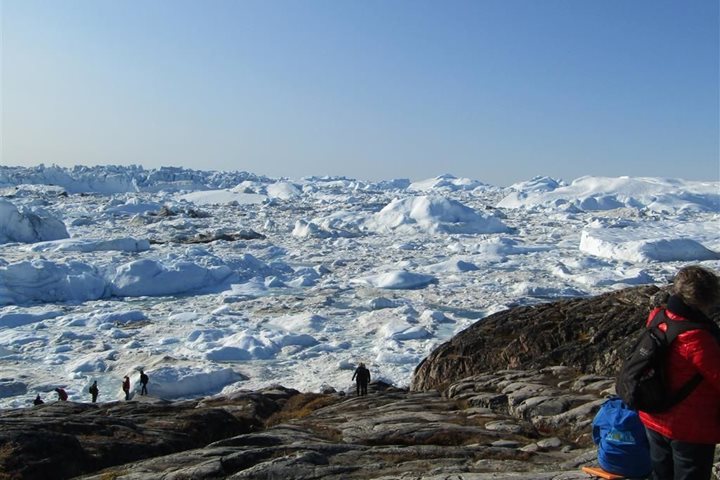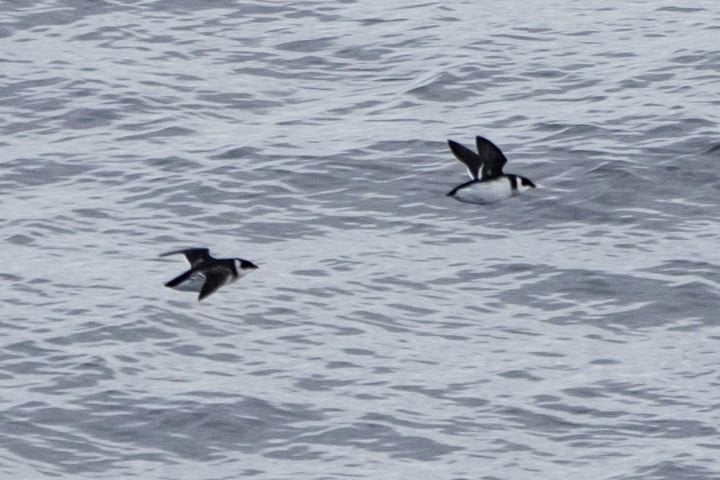As the final day on this voyage dawned, the National Geographic Explorer passed Funk Island with her bearing set directly towards Bonavista. Funk Island was the last stand in America of the Great Auk, the original “pengwyn” of the North. This big, beautiful and flightless bird species once lived in large numbers around the North Atlantic. However, they were very easy prey on their breeding sites and, therefore, exploited by ship crews—and by 1844 all were gone. In 1800, the last Great Auks on Funk Island were killed. Just six years earlier, the British ship HMS Boston, visited the island and an officer aboard entered this in his diary:
”If you come for their feathers, you do not give yourself the trouble of killing them, but lay hold of one and pluck the best of their feathers. You then turn the poor Penguin adrift, with its skin naked, to perish at his leisure. … When you abide on this island, you take a kettle with you into which you put a Penguin or two and kindle a fire under it, made of the unfortunate Penguins themselves. Their bodys being oily soon produce a Flame; there is no wood on the island.”
The morning saw most guests busy with various practical preparations for the disembarkation tomorrow. After yesterday’s visit to the old Norse settlement at the northern tip of Vinland (Newfoundland), today’s visit at Bonavista added another perspective as the latter was the landing site for Giovanni Caboto (aka John Cabot) and his crew in 1497, almost 500 years after the Norse reached Vinland farther to the north.
At 10:30 a.m., the Explorer arrived off Bonavista and right after lunch we all Zodiac’ed ashore and went sightseeing to a national historic site about cod fishing, a replica of John Cabot’s ship Matthew, as well as Cape Bonavista itself, the lighthouse, and an impressive nearby sinkhole, the ”dungeon.”
Bonavista was a “bona vista” to Cabot and his explorers when they went ashore long ago and, indeed, it still is. Although the weather was foggy and rainy in the beginning, it soon cleared up and we all had the most wonderful, warm, calm and sunny weather for the rest of the day. Bonavista town was very picturesque and absolutely charming.
The last shipbound Zodiac left shore around 5 p.m. and the Explorer heaved her anchor and sailed for St. John’s. Everybody got ready for the Captain’s Farewell Cocktail Party in the lounge, followed but yet another splendid dinner created by the chèf and his talented galley staff.
As the evening turned into night we had to accept the fact that this had been the last full day of our voyage to the Fabled Lands of the North; a fabulous and venturesome journey that we experienced together. We saw much and learned even more. We encountered old friends and made new ones. We saw wonderful wildlife as we covered rarely visited parts of the Arctic and the boreal climate zones. We experienced the Inuit culture in the north and the cod fishing culture in the south.
We are at the end of this expedition, but other regions of the blue planet are waiting to be explored in the future. Bon voyage!

